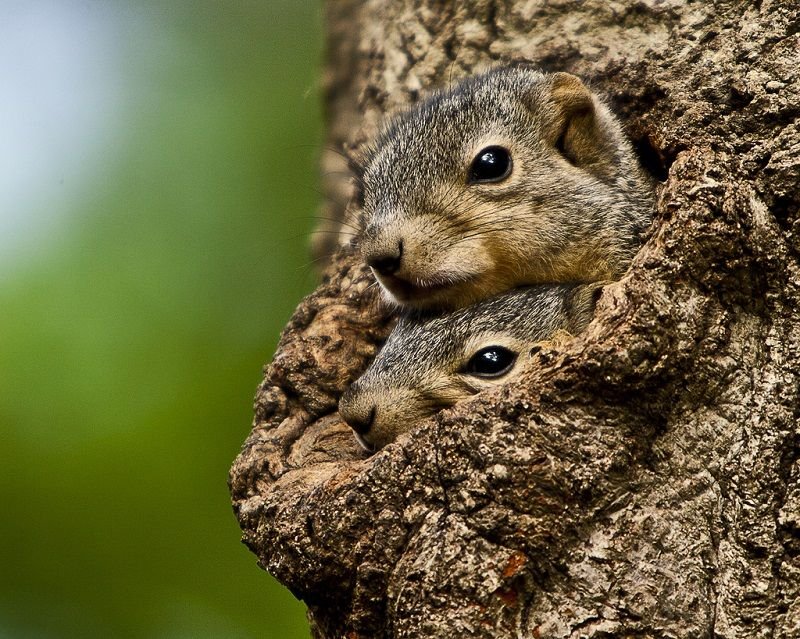
Let’s imagine being in a coffee shop, chatting about wildlife encounters. You might say, “Hey, I saw a squirrel today! It was so cute, but what’s the right thing to do if I got too close?” That’s the perfect start to understanding how to coexist with these energetic creatures. In this article, we’ll explore what to do if you encounter a tree squirrel in the wild, ensuring you enjoy their antics while keeping both you and the squirrel safe.
Understanding Tree Squirrels: A Quick Overview
Before diving into what to do if you come across a squirrel, it’s helpful to know a bit about them. Tree squirrels are small rodents found in many regions, often characterized by their bushy tails and playful behavior. The most common types include the Eastern gray squirrel, fox squirrel, and red squirrel. They thrive in wooded areas but are also found in parks and residential neighborhoods.
These squirrels play an important role in our ecosystem. They help with seed dispersal, which contributes to forest growth. Plus, they’re a food source for various predators. Here’s the thing: while they might seem like cute, bushy-tailed friends, they can be unpredictable if approached too closely.
Keep Your Distance: The Do’s and Don’ts
First and foremost, it’s essential to respect a squirrel’s space. If you encounter a tree squirrel in the wild, the best thing you can do is observe from a distance. Here are some key points to remember:
- Don’t rush towards it: If you see a squirrel, don’t rush over to pet it. They can be startled easily.
- Stay calm: If the squirrel notices you, try to stay still. Sudden movements can scare it away.
- Use a gentle voice: Talking softly can soothe the squirrel. They might even come closer out of curiosity.
While it might be tempting to approach for a closer look, remember that squirrels are wild animals. Approaching too closely can stress them and may lead to defensive behavior.
What If a Squirrel Approaches You?
Sometimes, squirrels can be quite bold. You might be sitting on a park bench, enjoying your sandwich when a squirrel decides to join you. If a squirrel approaches, it’s important to know how to act.
First, observe its body language. If it’s relaxed and curious, you can enjoy the moment. However, if it seems aggressive or is chasing after food, it may feel threatened or hungry. Here’s how to handle it:
- Don’t feed it: While it might seem sweet to share your snack, feeding squirrels can lead to unhealthy dependence on humans.
- Gently back away: If it feels too close for comfort, calmly and slowly move away to give it space.
- Enjoy the show: Often, squirrels are just curious. Watch their antics instead of trying to interact.
This doesn’t just protect you; it helps the squirrel stay safe and wild.
Understanding Squirrel Behavior
Squirrels communicate through a mix of sounds and body language. They can be chatty creatures, using high-pitched calls to alert others of danger or to communicate with their young. When you’re out in the wild and encounter a tree squirrel, paying attention to these cues can provide insight into what it’s feeling.
For example, if you notice a squirrel flicking its tail or making a rapid chattering sound, it might feel threatened. Conversely, if it’s hopping around playfully, it’s likely just enjoying its surroundings.
Understanding these behaviors can enrich your experience and help you react appropriately. Here’s the thing: the more you know about them, the better you can enjoy observing them in their natural habitat.
Safety Precautions for Both You and the Squirrel
While tree squirrels are generally harmless, there are safety precautions to consider when you encounter one in the wild. Here are a few handy tips:
- Don’t corner it: If a squirrel feels trapped, it might act defensively. Always leave an escape route.
- Wash your hands: If you’ve touched anything that could have had squirrel droppings, it’s smart to wash your hands afterward to avoid any potential health risks.
- Keep pets on a leash: If you’re out with a dog, keep it leashed to prevent it from chasing the squirrel.
By taking these precautions, you help maintain a safe space for both yourself and the squirrel.
When to Seek Help: Injured Squirrels
You might come across a squirrel that appears injured. This can be distressing, but it’s essential to know when and how to help. If you see a squirrel that’s struggling to move or seems disoriented, it’s best to contact a local wildlife rehabilitation center.
Here’s what you can do:
- Observe from a distance: Don’t approach a hurt squirrel yourself, as it may bite in defense.
- Document the location: Take note of where you saw the squirrel if you need to report it later.
- Contact professionals: Reach out to wildlife experts who can handle the situation safely.
Remember, these professionals have the training to care for wild animals and can ensure the best outcome for the injured squirrel.
Encountering a tree squirrel in the wild can be a delightful experience. These little furballs add a spark of life to our outdoor adventures. By respecting their space, understanding their behavior, and knowing how to respond to various situations, you’ll create a safer experience for yourself and the squirrels.
Next time you’re in a park or the woods, take a moment to observe these agile creatures. They’re not just cute; they’re an essential part of our ecosystem. So, grab your cup of coffee, relax, and enjoy the show from a safe and respectful distance.

